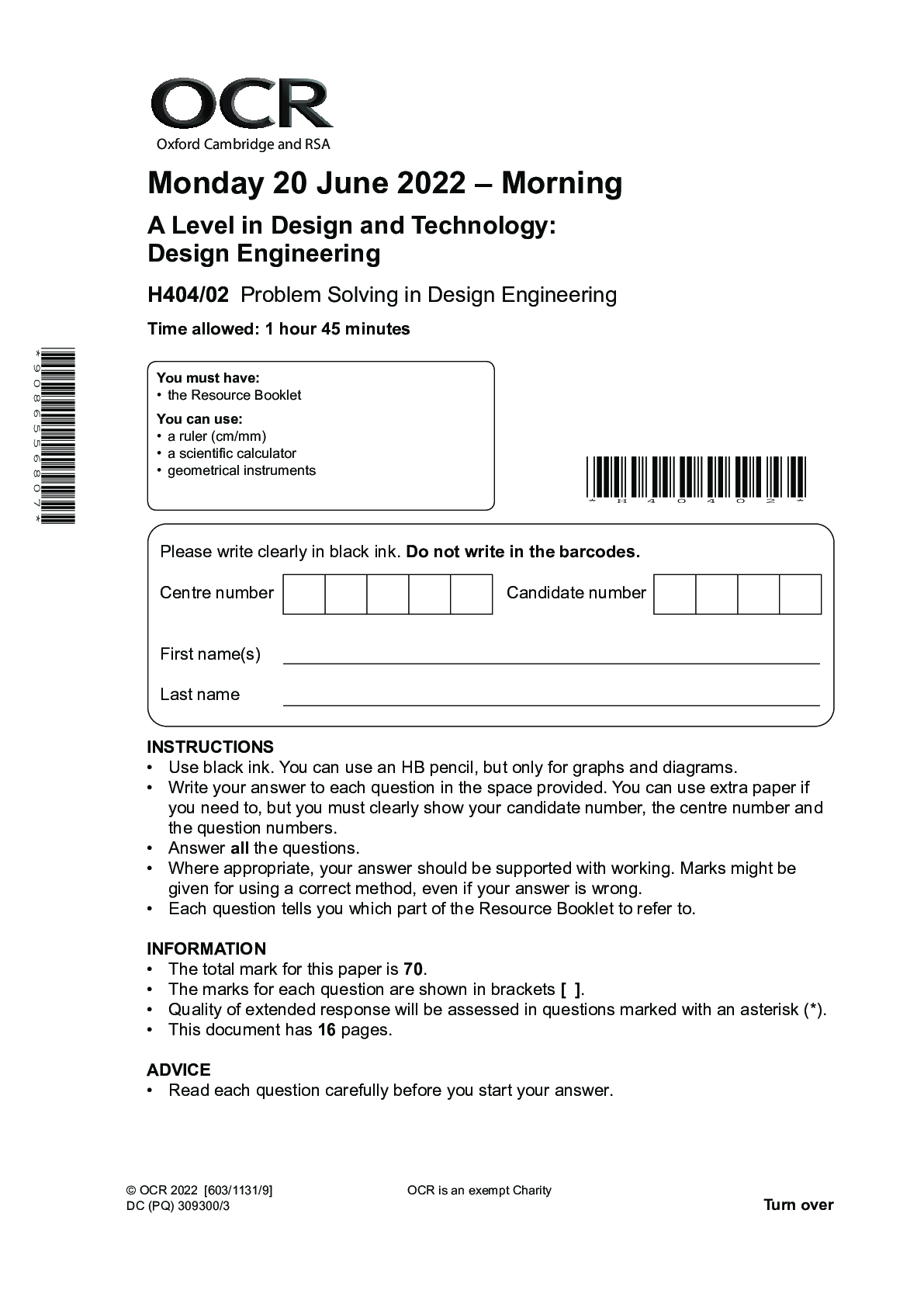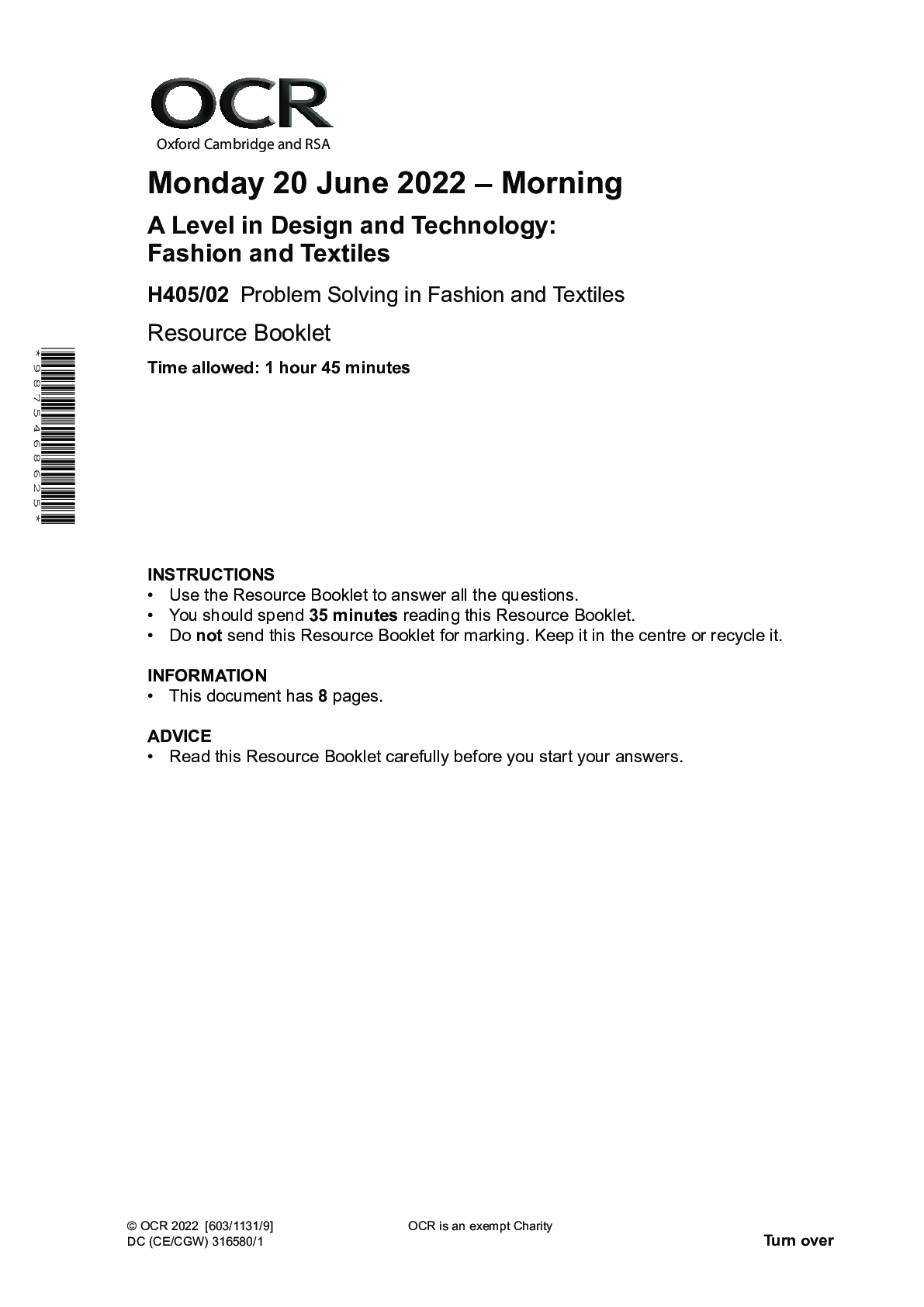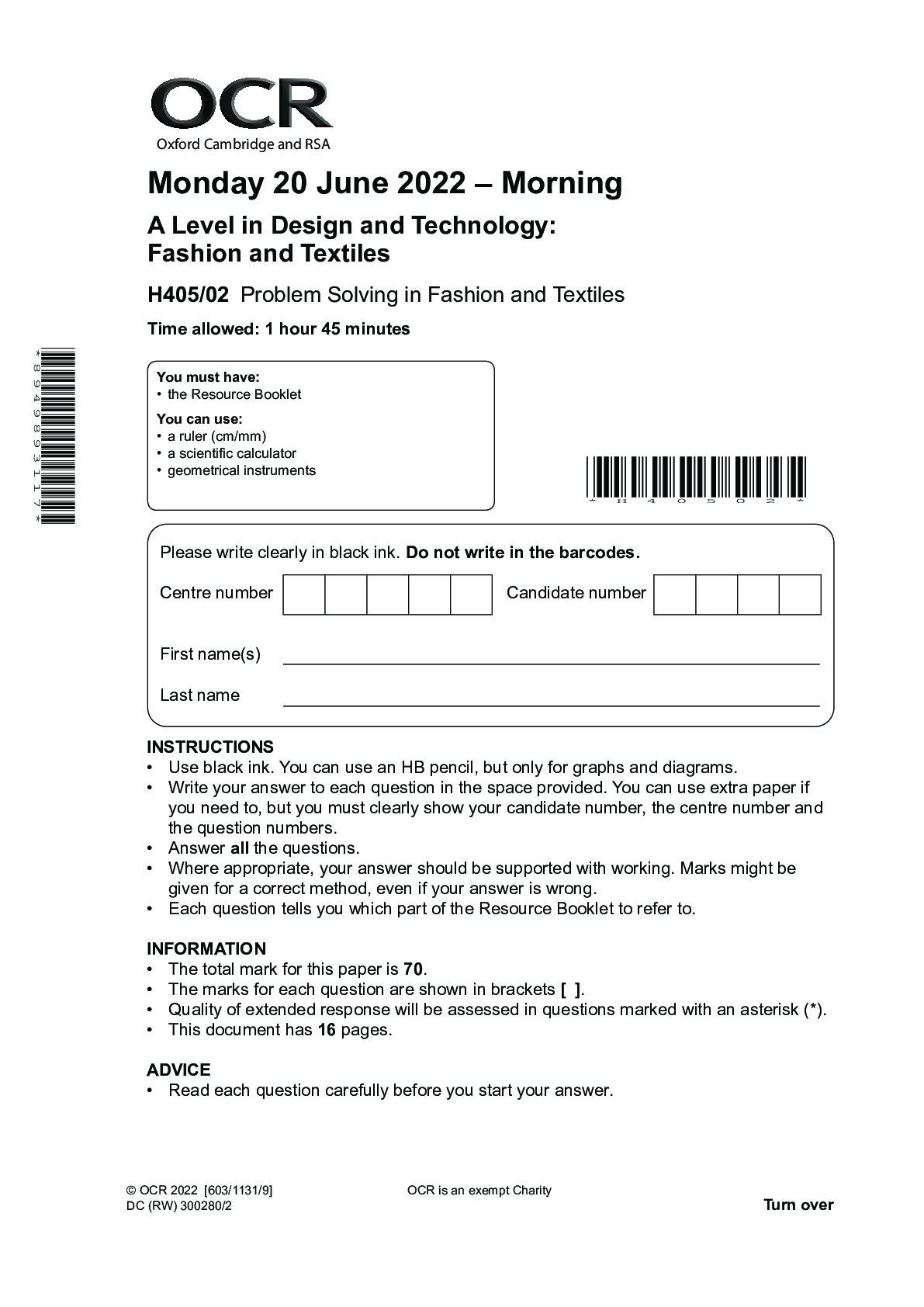Biology > A Level Question Paper > Friday 17 June 2022 – Morning A Level Biology B (Advancing Biology) H422/02 Scientific literacy in (All)
Friday 17 June 2022 – Morning A Level Biology B (Advancing Biology) H422/02 Scientific literacy in biology Advance Notice Article
Document Content and Description Below
Friday 17 June 2022 – Morning A Level Biology B (Advancing Biology) H422/02 Scientific literacy in biology Advance Notice Article Time allowed: 2 hours 15 minutes INSTRUCTIONS • Do no... t send this Advance Notice Article for marking. Keep it in the centre or recycle it. INFORMATION • This is a clean copy of the Advance Notice Article you have already seen. • This document has 4 pages. © OCR 2022 [601/4720/9] DC (CJ) 316848/1 OCR is an exempt Charity Turn over Biochemistry of exercise-induced acidosis The development of acidosis during intense exercise has a traditional explanation: an increase in lactic acid production. Each lactic acid molecule can release a proton and form the acid salt sodium lactate. Based on this explanation, if the rate of lactate production is high enough, the cellular proton buffering capacity will be exceeded, which results in a decrease in cellular pH. These biochemical events have been termed lactic acidosis. An increase in lactate production has long been considered one of several causes of muscle fatigue during intense exercise. However, many scientists think there is no biochemical evidence that lactate production causes acidosis. In fact, lactate production reduces acidosis rather than causing it. There is a wealth of research evidence to show that acidosis is caused by reactions other than lactate production. Protons do not accumulate in cells when the ATP demand of muscle contraction is met by mitochondrial respiration. Instead, protons are used by the mitochondria for oxidative phosphorylation, maintaining the proton gradient across the inner mitochondrial membrane. It is only when exercise intensity increases that there is a greater reliance on ATP regeneration from non-mitochondrial sources: glycolysis and the creatine phosphate system. Creatine phosphate is used as a source of ATP during vigorous exercise. Production of ATP in this way consumes protons. creatine phosphate + ADP + H+ creatine + ATP Glycolysis is usually considered to start with glucose. However, in muscle cells, glycogen is an important respiratory substrate. Glycogen is converted to glucose phosphate, not glucose, as shown in Fig. 1. There are proton transport systems between the cytosol and the mitochondria. These transport systems reveal the power of mitochondrial respiration in helping to control the balance of protons within the cell. Mitochondrial metabolism releases electrons and protons from substrates and uses these electrons and protons to eventually produce ATP. Protons, ADP and Pi are transported into the mitochondria from the cytoplasm. The protons are required for the reduction of molecular oxygen; ADP and Pi are required to generate more ATP for muscle contraction. A proton is released every time ATP is broken down to ADP and Pi. Metabolic acidosis occurs when the rate of ATP hydrolysis, and therefore the rate of ATP demand, exceeds the rate at which ATP is produced in the mitochondria. glucose (6C) ATP glycogen + Pi 2 H2O glucose phosphate (6C) fructose phosphate (6C) fructose 1,6-bisphosphate (6C) 2 × glyceraldehyde 3-phosphate (2 × 3C) 2 Pi 2 × glycerate 1,3-bisphosphate (2 × 3C) 2 × glycerate 3-phosphate (2 × 3C) pyruvate (2 × 3C) ADP + H+ ATP ADP + H+ 2 NAD+ 2 NADH + 2 H+ 2 ADP 2 ATP 2 ADP + 2 H+ 2 ATP Fig. 1 The reactions of glycolysis using glucose or glycogen as the respiratory substrate In muscle cells, the ATP that is supplied from non-mitochondrial sources is eventually used to fuel muscle contraction. This increases proton release and is responsible for the acidosis of intense exercise. Lactate production increases under these cellular conditions to prevent pyruvate accumulation and supply the NAD+ needed for glycolysis. Increased lactate production therefore coincides with cellular acidosis, but it does not cause it. Nonetheless, lactate production remains a good indirect marker for the metabolic conditions that induce metabolic acidosis in cells. If muscles did not produce lactate, acidosis and muscle fatigue would occur more quickly and exercise performance would be severely impaired. Any factor that reduces the ability of muscles to contract is likely to cause muscle fatigue. Another explanation for muscle fatigue does not involve acidosis. During intense exercise, ATP is hydrolysed to ADP and Pi. Scientists have suggested that the Pi combines with calcium ions in the sarcoplasmic reticulum to form insoluble calcium phosphate. This reaction is thought to represent another cause of muscle fatigue during exercise. [Show More]
Last updated: 11 months ago
Preview 1 out of 7 pages
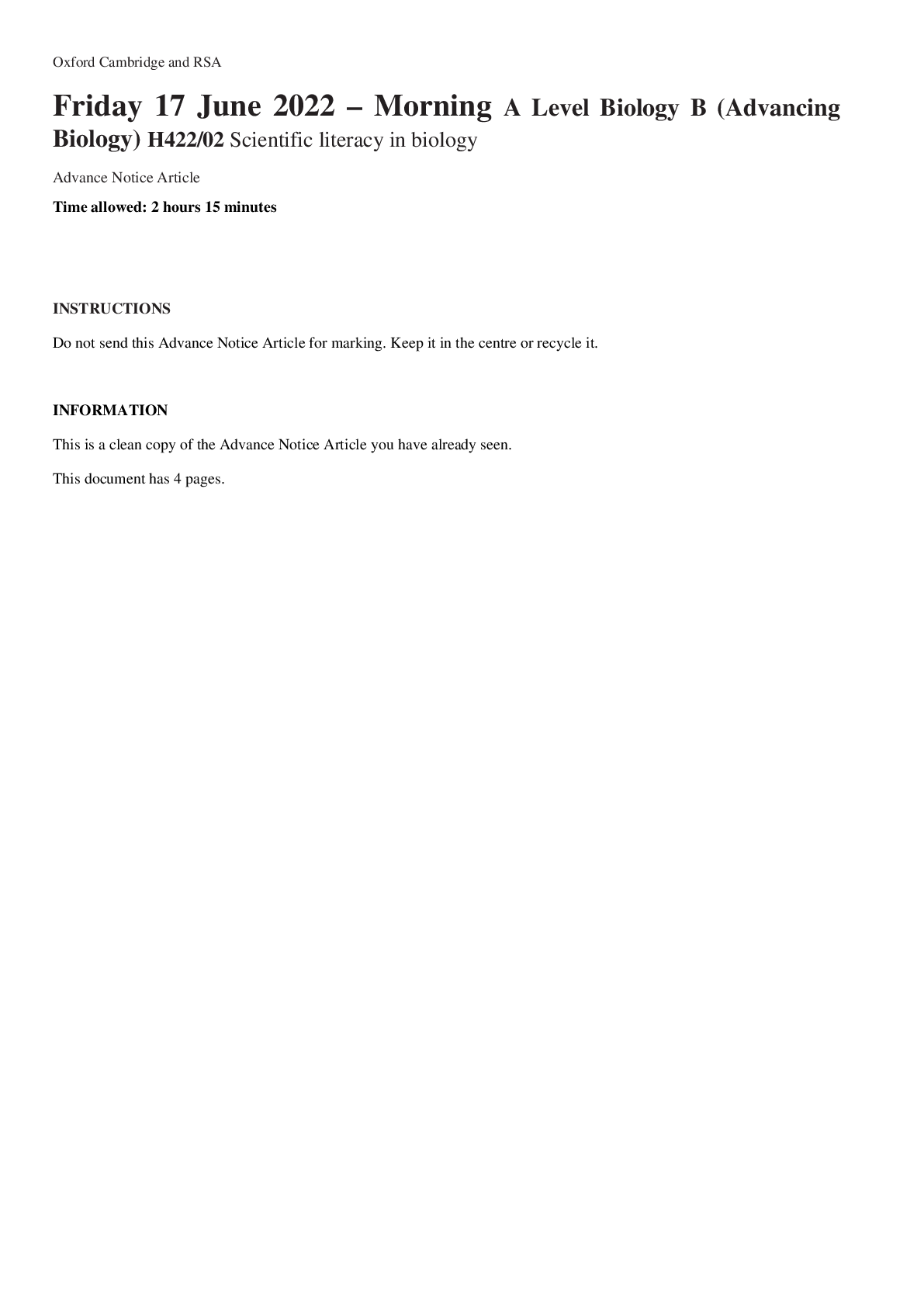
Reviews( 0 )
Document information
Connected school, study & course
About the document
Uploaded On
Jun 14, 2023
Number of pages
7
Written in
Additional information
This document has been written for:
Uploaded
Jun 14, 2023
Downloads
0
Views
52

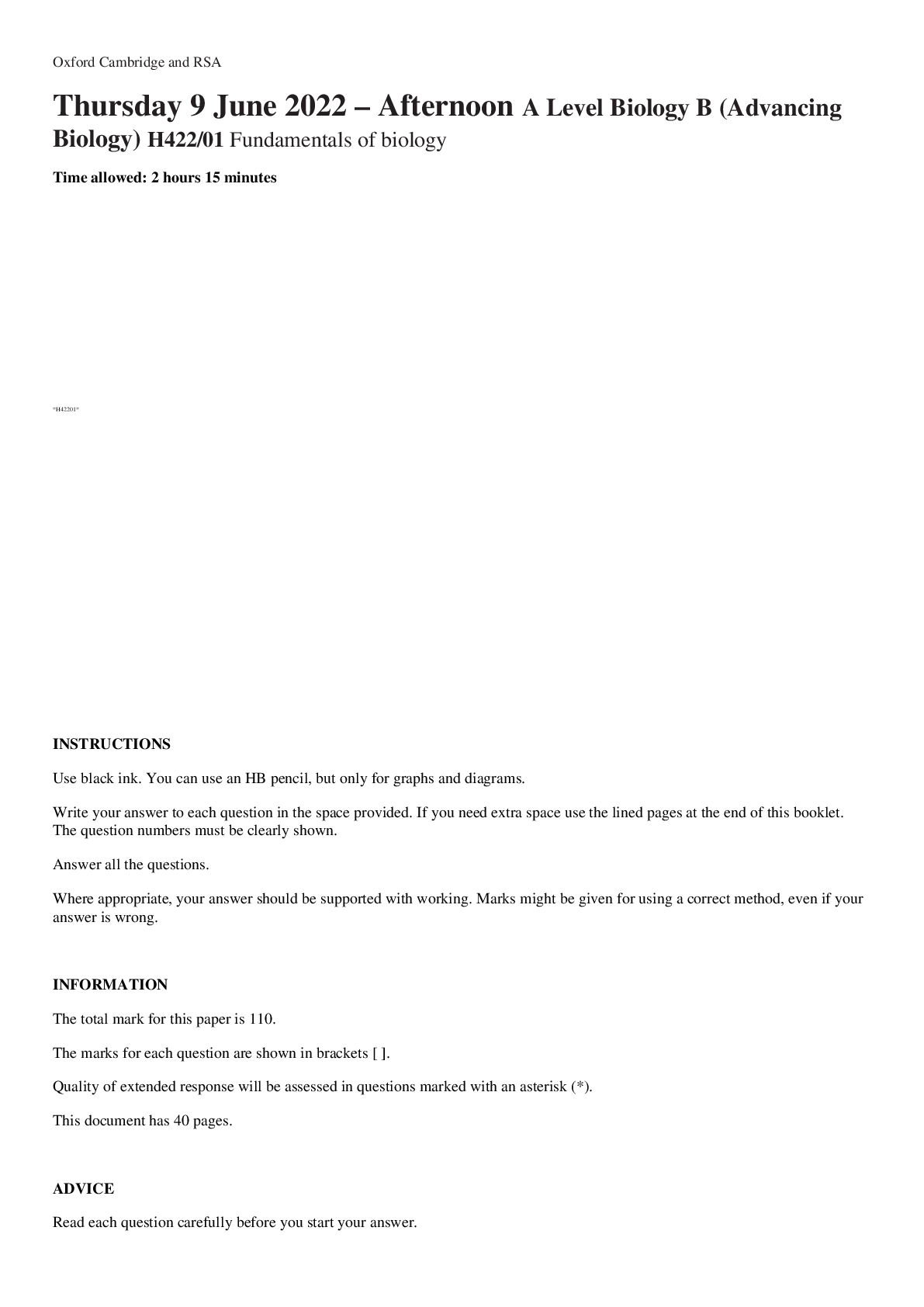
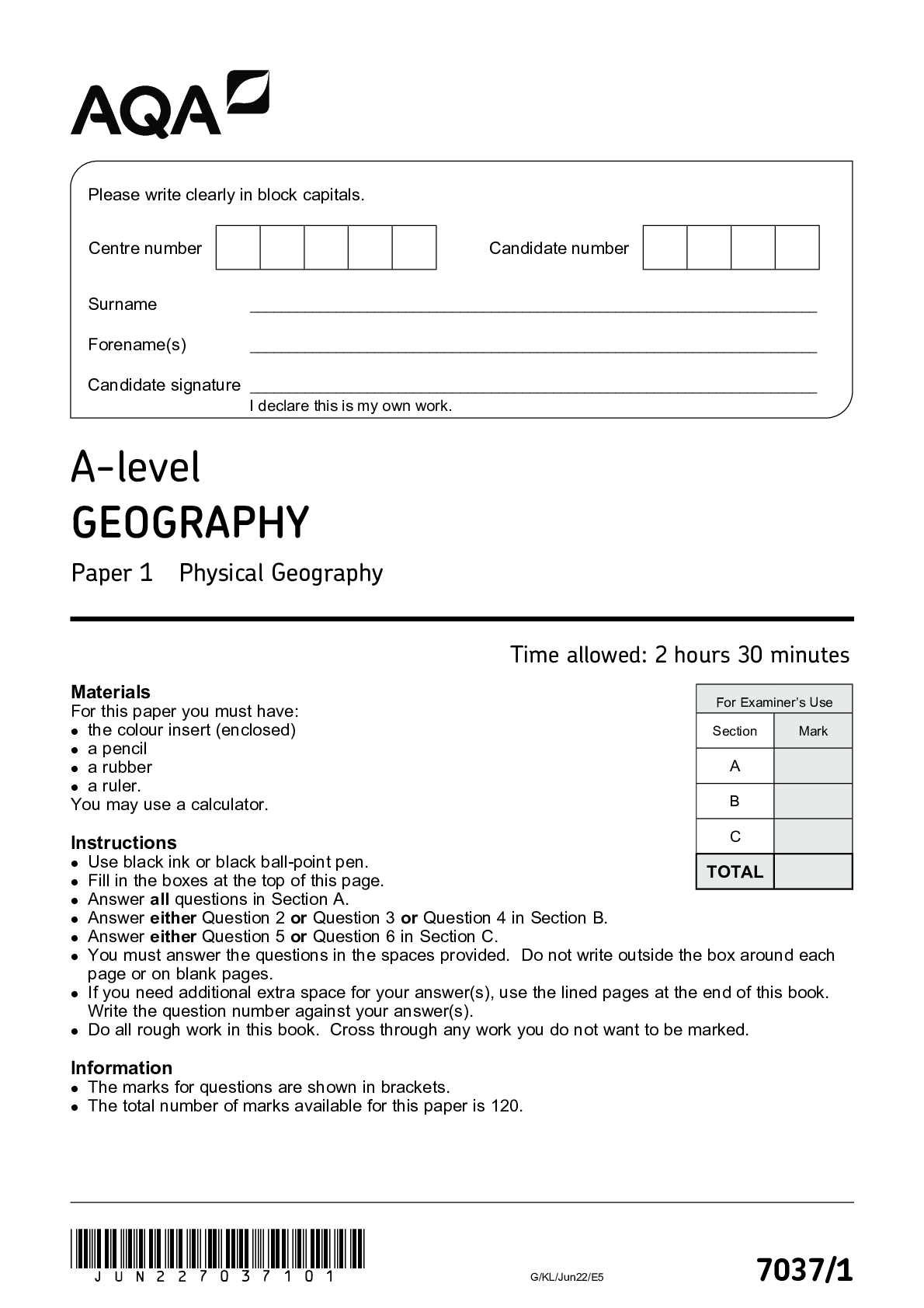
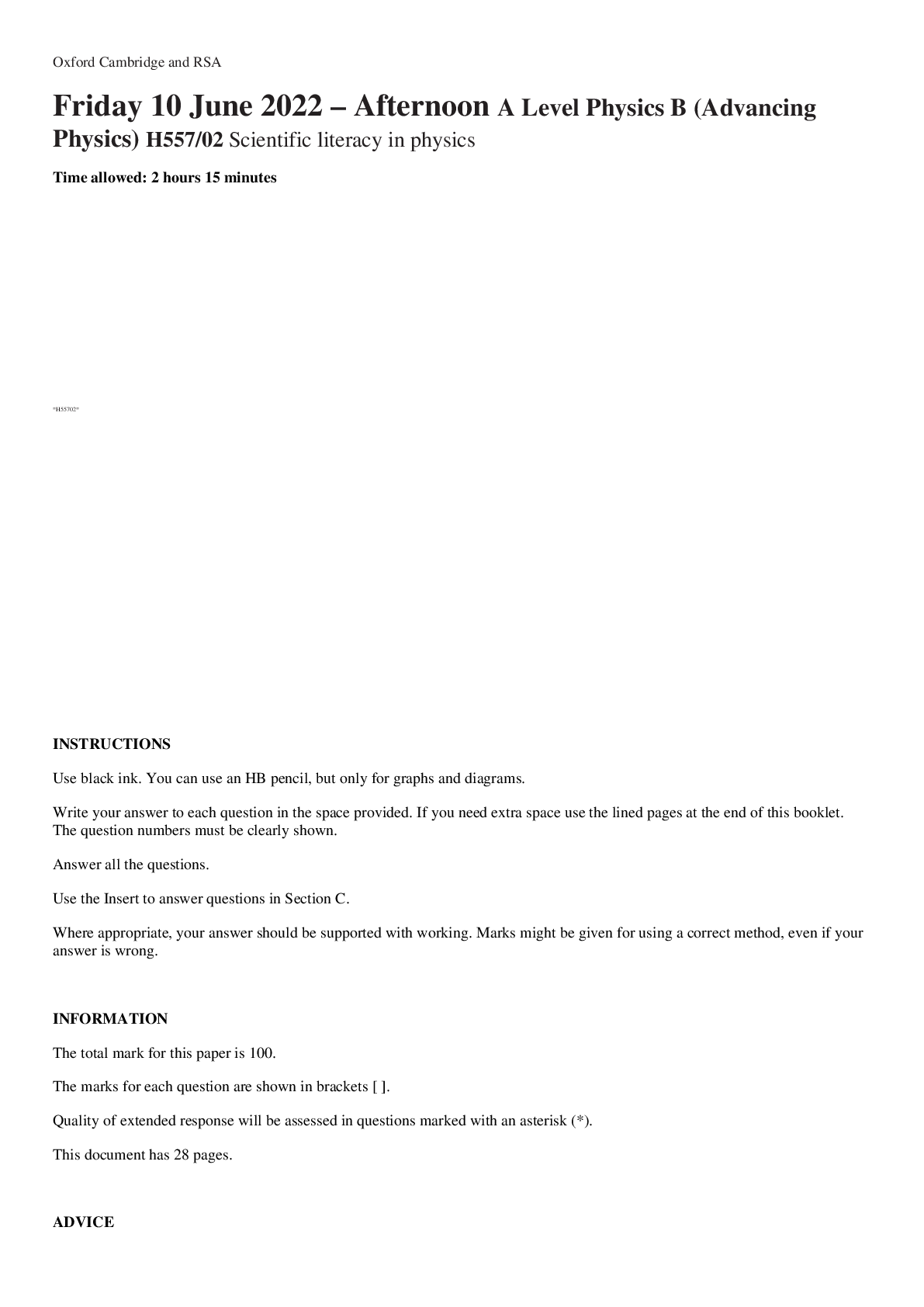
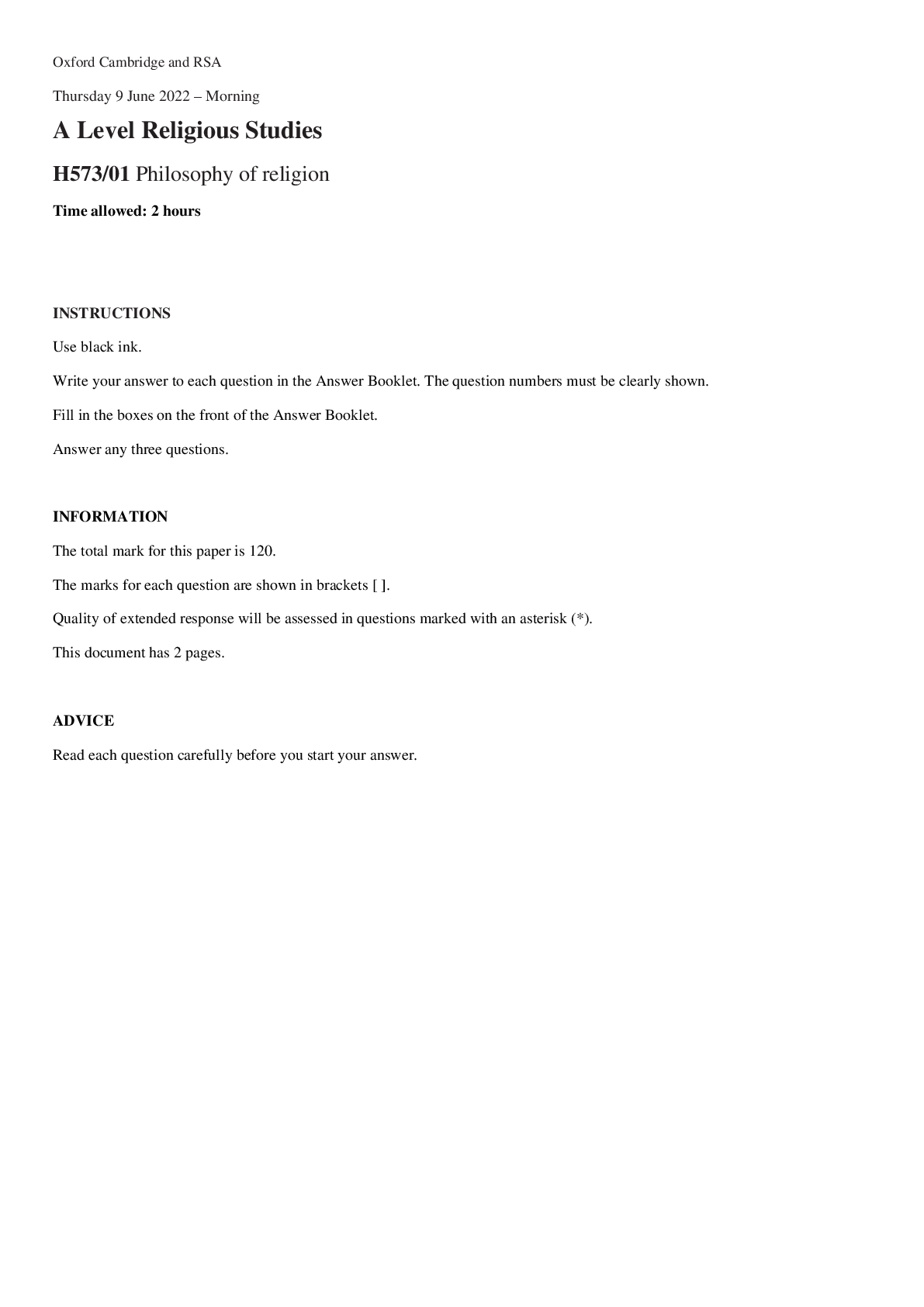
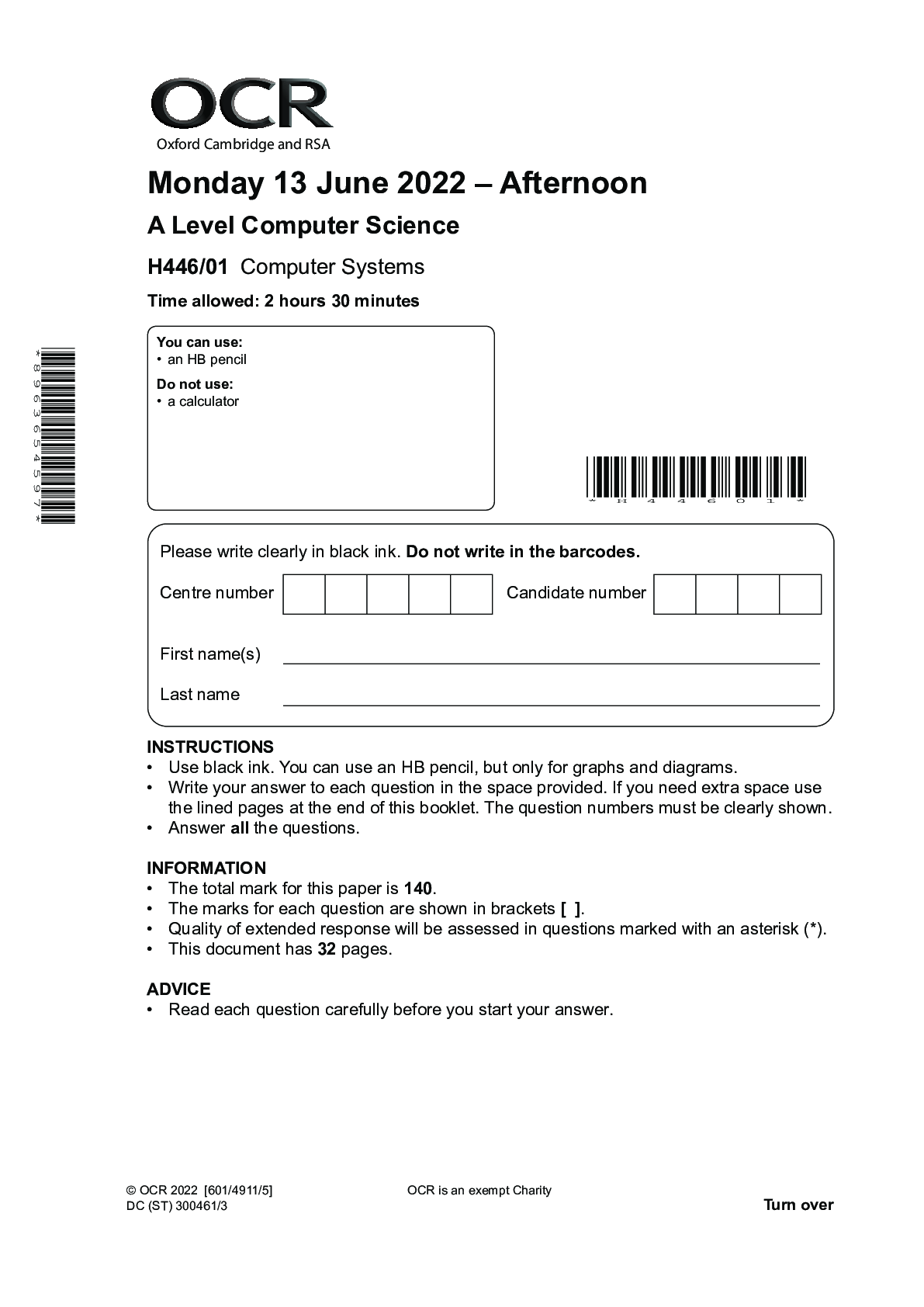
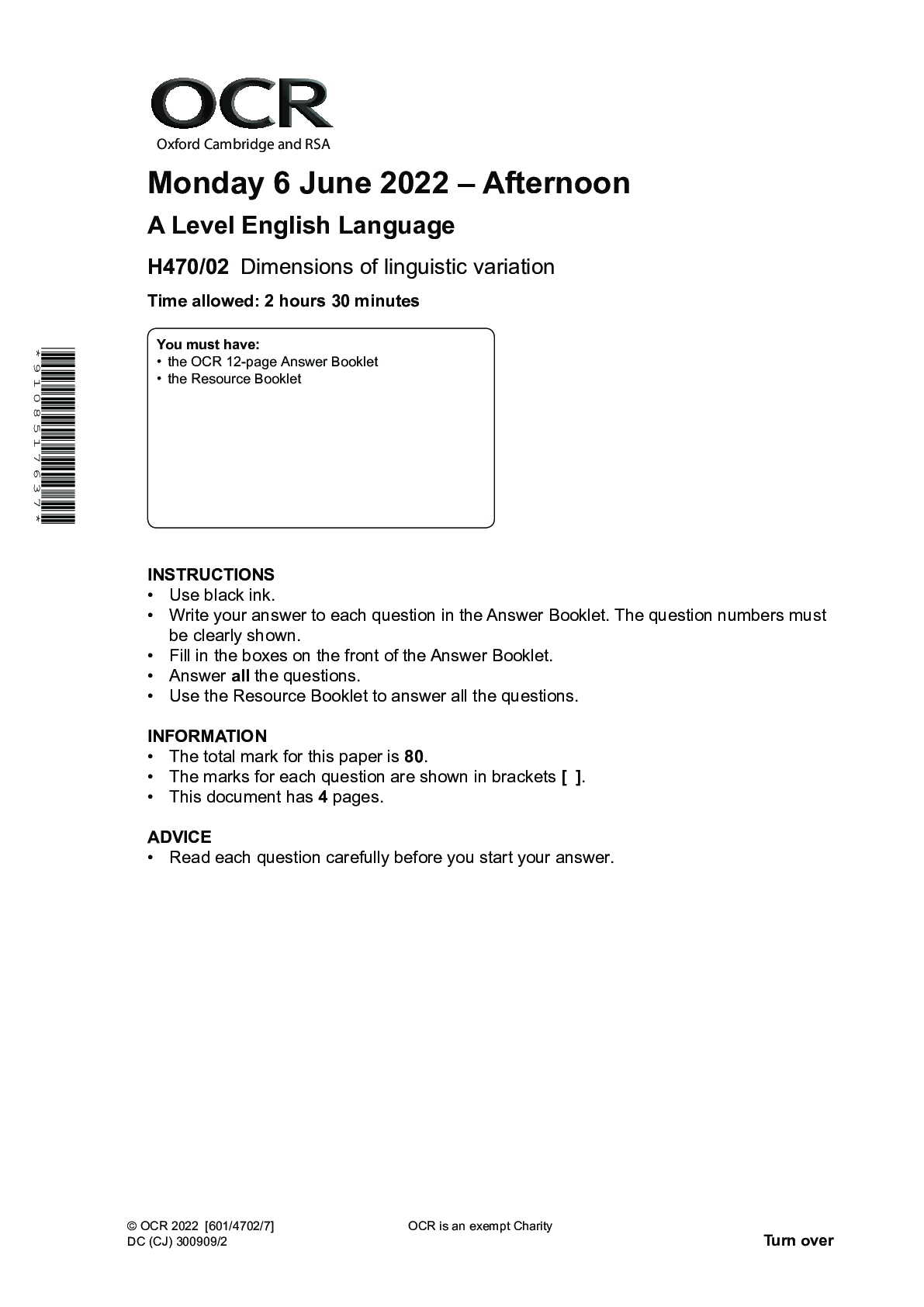
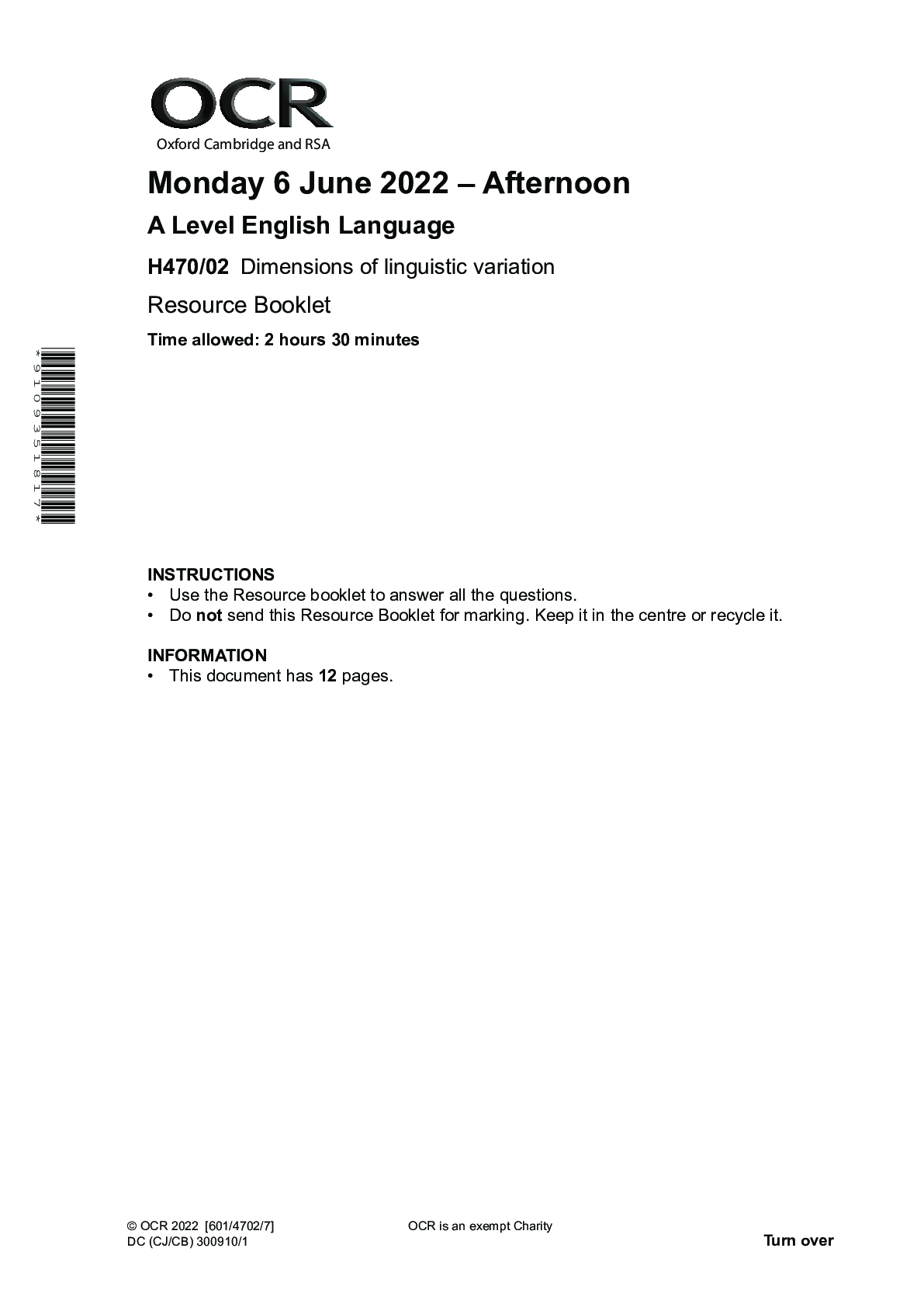
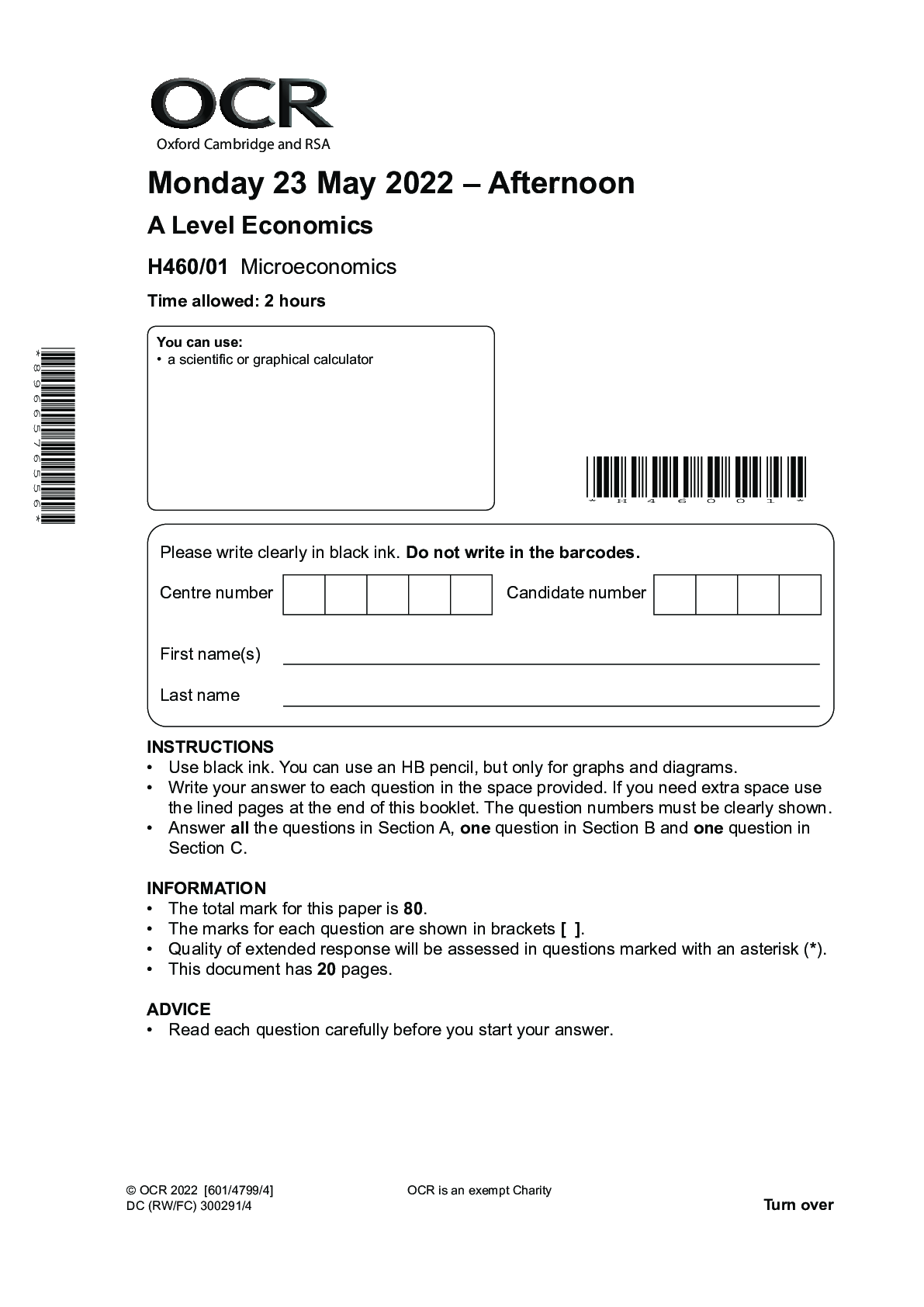
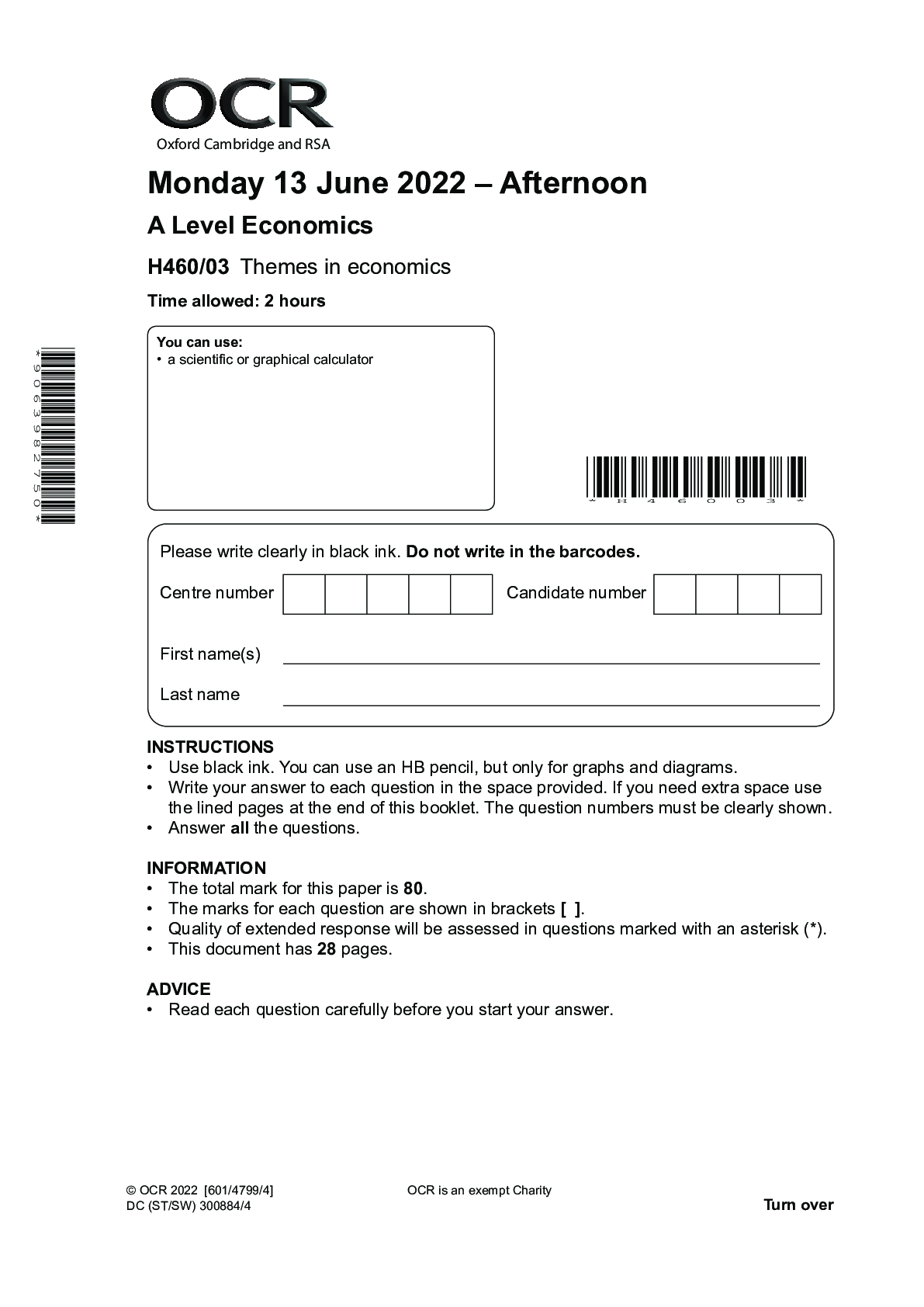
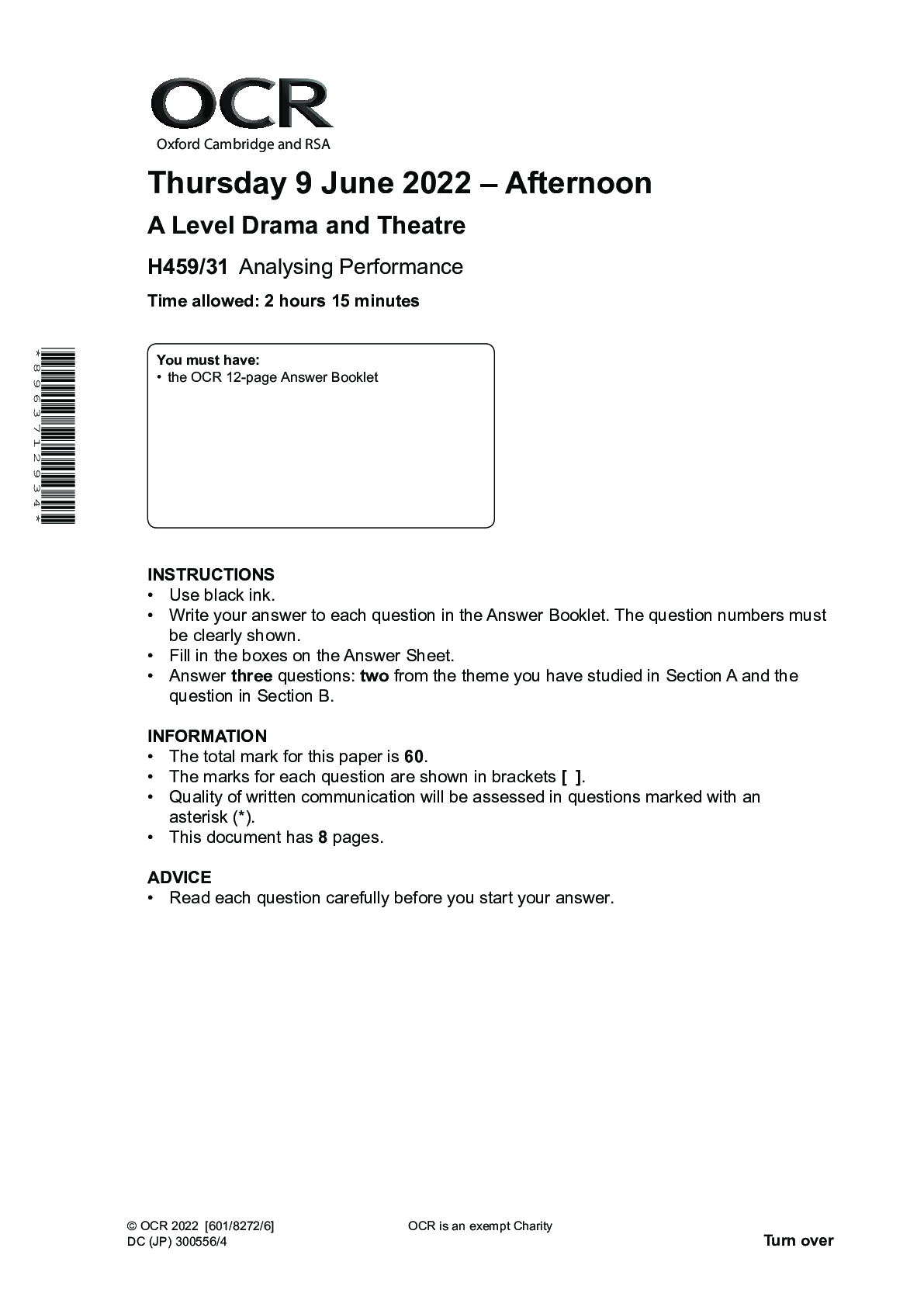




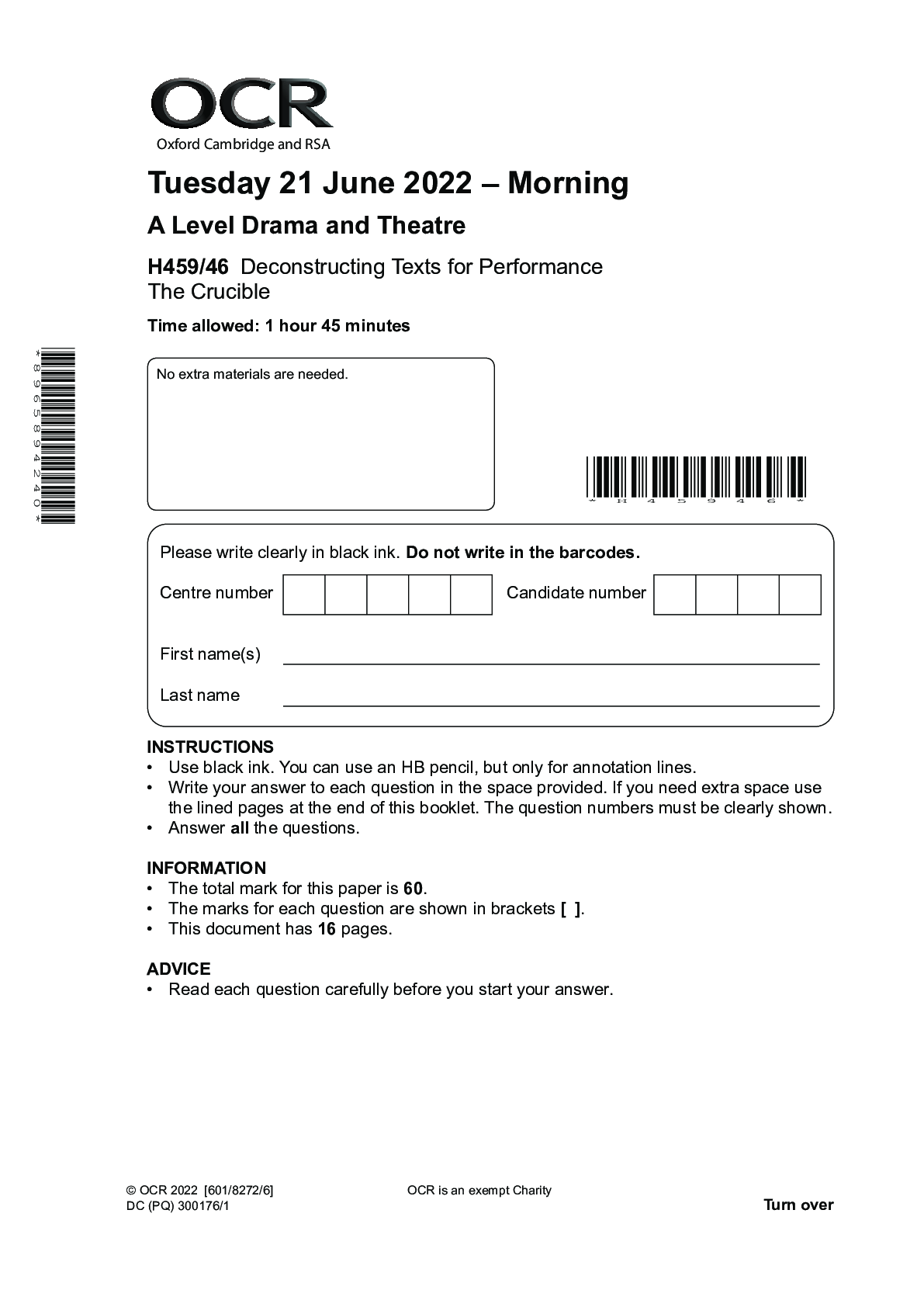
 H474-03 Reading as a writer, writing as a reader Thursday 16 June 2022 – Afternoon.png)

